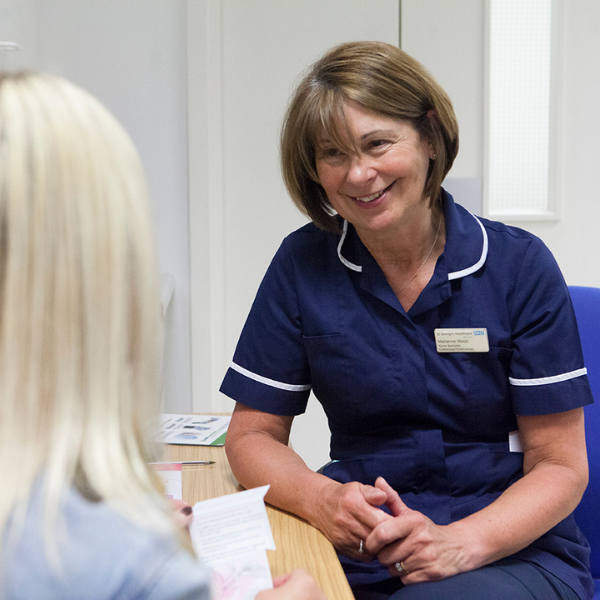Testing for HPV
Last modified: 2 June 2025, 13:49
Is there a test for HPV?
Yes. HPV tests are done as part of the NHS cervical screening programme for women and people with a cervix that are between 25–64 years old. They are:
- HPV primary screening
- HPV triage
- test of cure.
HPV primary screening and HPV triage happen at the start of the programme. Test of cure is done if someone has had treatment for cell changes.
Read more about cervical screening >
Read more about cell changes >
HPV primary screening
In England, Scotland and Wales, HPV primary screening is used at cervical screening (previously called a ‘smear test’). This means that cells from your cervix are tested for high-risk HPV first. If high-risk HPV is found, the same cells are looked at under a microscope to see if they have changed.
In Northern Ireland, HPV testing is done as a ‘triage’ in cervical screening. You can find out more about HPV triage below.
HPV primary screening is a more effective test than HPV triage. It helps us find who is at higher risk of developing cell changes or cervical cancer earlier. Northern Ireland will switch to HPV primary screening in the future.
What happens during cervical screening appointments is the same in all the UK countries, no matter if HPV primary screening or HPV triage is used.
Read more about HPV primary screening >
HPV triage
In Northern Ireland, HPV triage is used at cervical screening. This means your cervical cells are looked at with a microscope first. This is to see if they have changed. If your cells show changes, they are then tested for high-risk HPV.
Read more about cervical screening >
Test of cure
In the UK, an HPV test is also used to show that treatment for cervical cell changes has been successful. This is called test of cure. It is usually done 6 months after treatment.
If test of cure shows you do not have high-risk HPV, you will be invited back for cervical screening every 3 years.
If high-risk HPV is found, you will be invited to colposcopy again.
Read more about follow-up after treatment for cell changes >
Which types of HPV testing happen where I live?
You can find out which HPV tests are used in your UK country below:
|
|
England |
Scotland |
Wales |
Northern Ireland |
|
HPV primary screening |
Yes |
Yes |
Yes |
No (date to be confirmed) |
|
HPV triage |
No |
No |
No |
Yes |
|
Test of cure |
Yes |
Yes |
Yes |
Yes |
More information and support
If you want to know more about the HPV tests offered in your area, it is best to speak with your GP. We have more detailed information about some of the topics on this page, including:
We know that HPV can be confusing — if you feel this way, you are not alone and we are here for you:
- We answer some common questions about HPV on our HPV FAQs page
- For emotional support, call our free Helpline on 0808 802 8000 — our opening hours are here
- Join our online Forum to talk with other people
We cannot give you medical advice or answers about any results. In this case, it is best to speak with your GP or nurse.
We would like to thank all the experts who checked the accuracy of this information, and the volunteers who shared their personal experience to help us develop it.
References
- Royal College of Nursing. 2020. Human Papillomavirus (HPV), Cervical Screening and Cervical Cancer.
- Northern Ireland Department of Health. 2022. A Cancer Strategy for Northern Ireland 2022–2032.
- Rebolj M, et al. 2019. Primary cervical screening with high risk human papillomavirus testing: observational study. BMJ. 364:l240.
- Public Health England. 2021. Colposcopic diagnosis, treatment and follow up.
- Public Health Wales. 2022. Cervical Screening Wales Sample Taker Reference Guide.
- NHS National Services Scotland. 2022. Scottish Cervical Screening Programme.
We write our information based on literature searches and expert review. For more information about the references we used, please contact [email protected]

Cervical screening >
Find out what cervical screening is for, who is invited and what to expect at the appointment.
